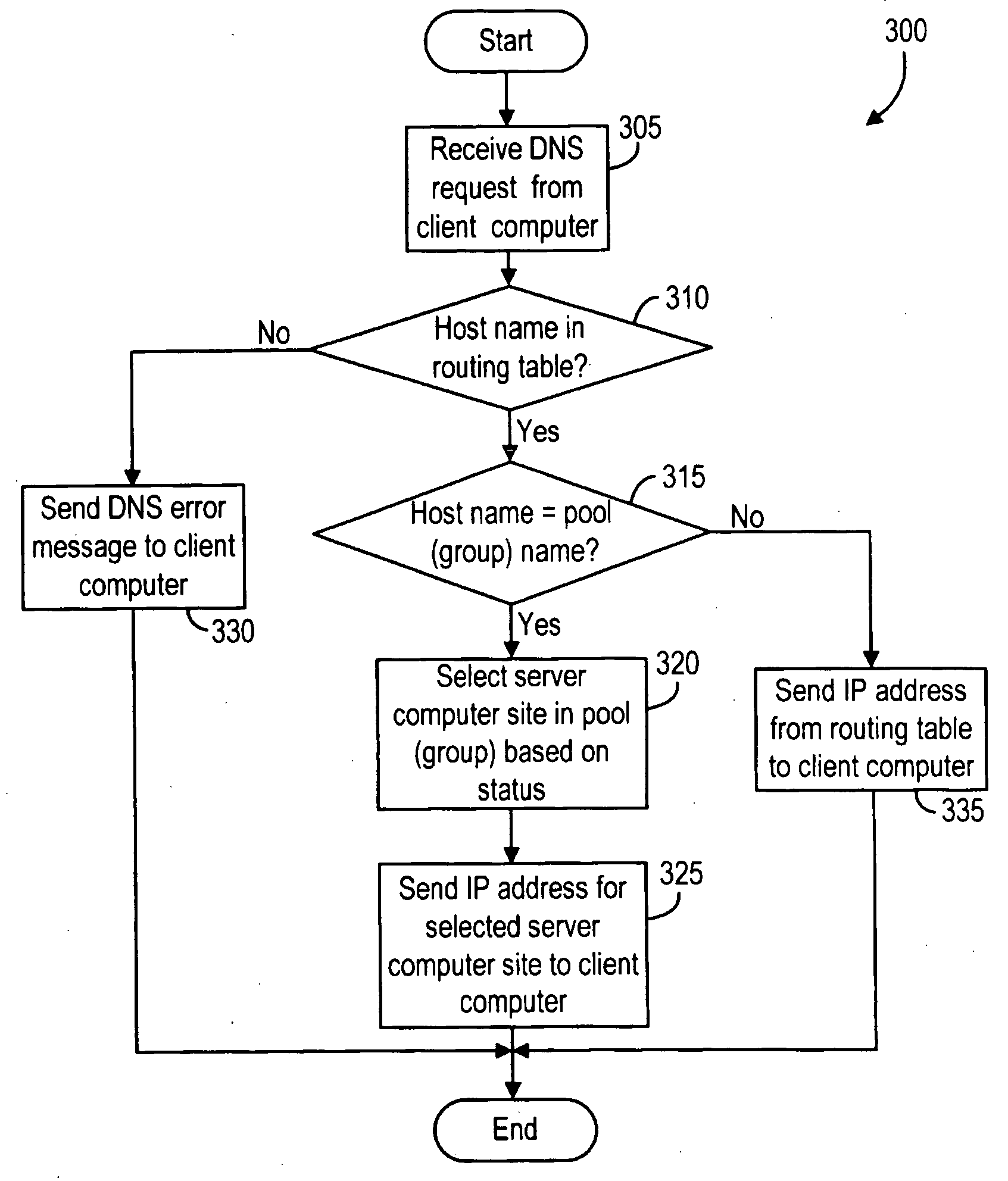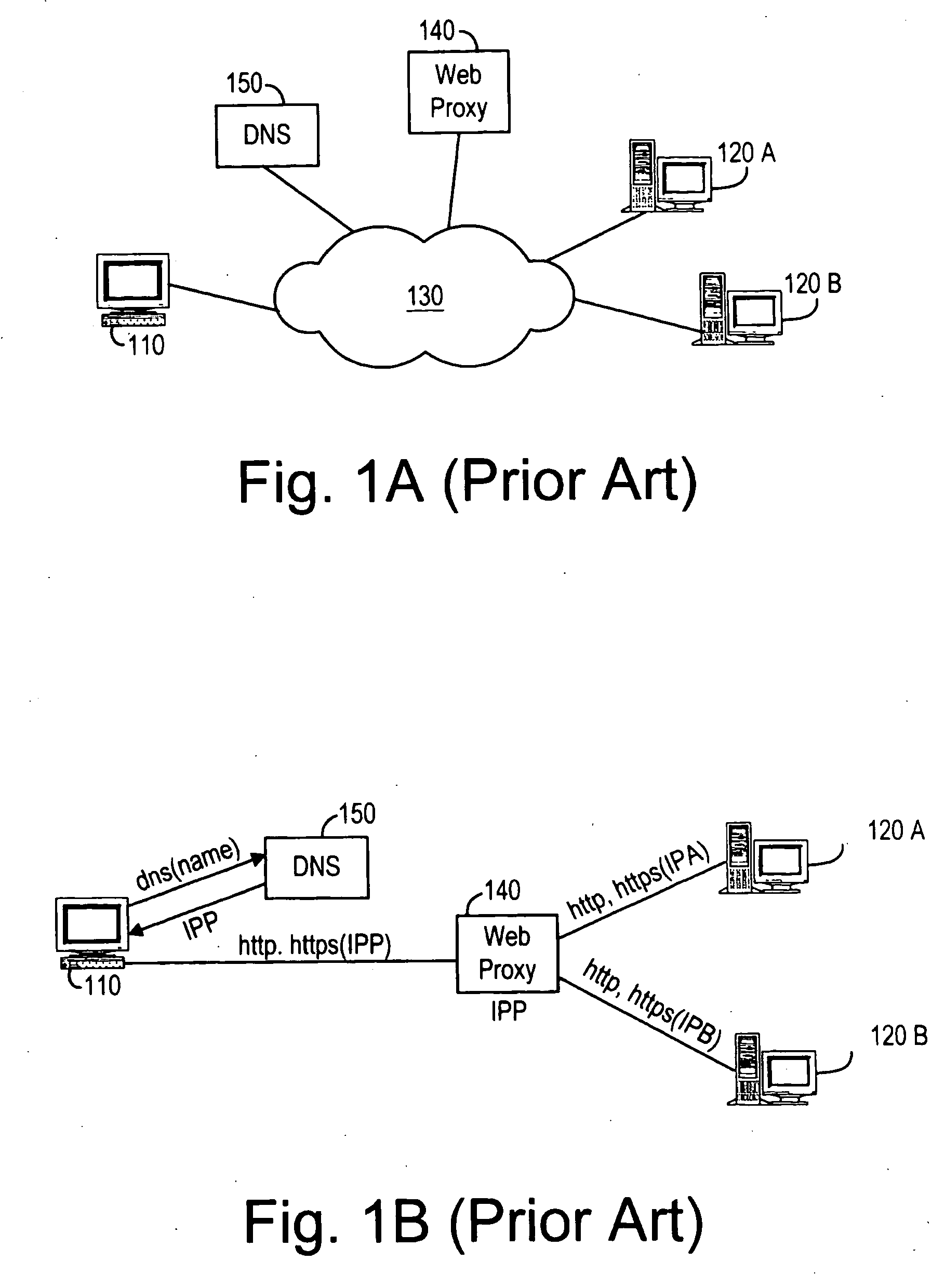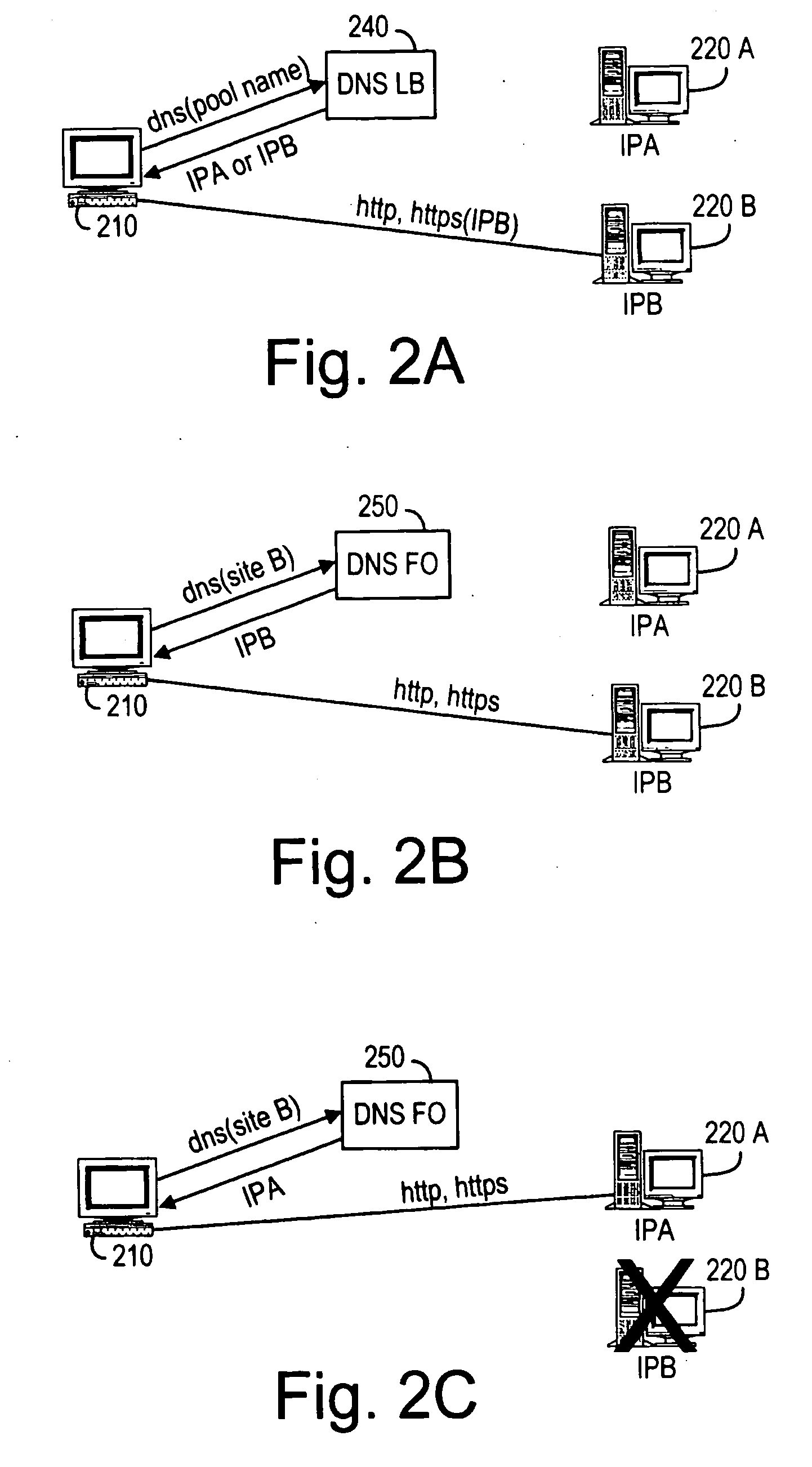System and method for distributing load among redundant independent stateful World Wide Web server sites
- Summary
- Abstract
- Description
- Claims
- Application Information
AI Technical Summary
Benefits of technology
Problems solved by technology
Method used
Image
Examples
Embodiment Construction
[0022]FIGS. 2A-2C illustrate a computer system 200 for distributing load among a plurality of stateful, independent, redundant web server sites, in accordance to some embodiments of the invention. The computer system 200 includes a client computer 210, a plurality of server computer sites 220n (where n=A, B, . . . a DNS Load Balance (LB) server 240 and a DNS Failover (FO) server 250 connected over a computer network 230 (FIGS. 4A and 4B).
[0023] The DNS Load Balance server 240 is initially configured to be authoritative for a Pool Name identifying the entire pool of server computer sites 220n (FIG. 2A). A very low, or zero, TTL is configured for use with the Pool Name. When the DNS LB server 240 receives a DNS resolution request for the Pool Name, the DNS LB server 240, in turn, selects one of the server computer sites 220n based on the respective statuses of all server computers 220n in the pool. Various status calculation techniques known in the art can be used to select the serve...
PUM
 Login to View More
Login to View More Abstract
Description
Claims
Application Information
 Login to View More
Login to View More - R&D
- Intellectual Property
- Life Sciences
- Materials
- Tech Scout
- Unparalleled Data Quality
- Higher Quality Content
- 60% Fewer Hallucinations
Browse by: Latest US Patents, China's latest patents, Technical Efficacy Thesaurus, Application Domain, Technology Topic, Popular Technical Reports.
© 2025 PatSnap. All rights reserved.Legal|Privacy policy|Modern Slavery Act Transparency Statement|Sitemap|About US| Contact US: help@patsnap.com



